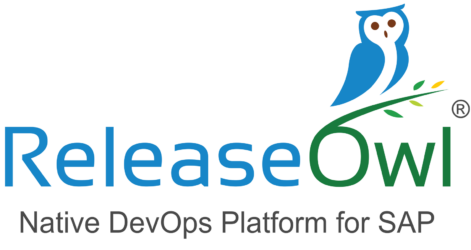SAP ETL
Filter By
Browse By
- SAP Analytics and AI
- SAP Application Development and Integration
- All SAP Application Development and Integration
- SAP ABAP
- SAP ABAP Development Tools
- SAP ABAP Test Cockpit
- SAP API Management
- SAP BAPI
- SAP Basis
- SAP BRF
- SAP Business Application Studio
- SAP CMS
- SAP Design Studio
- SAP Development Tools
- SAP DevOps
- SAP EAI
- SAP EDI
- SAP Extension Suite
- SAP Fiori
- SAP Fiori Elements
- SAP Integration Suite
- SAP Low Code Application Development
- SAP Low Code Automation
- SAP Netweaver
- SAP Release Management
- SAP UI5
- SAP Web Application Server
- SAP Web IDE
- SAP Business Process Management
- SAP Center of Excellence
- SAP CIO
- SAP Customer Experience
- SAP Data and Data Management
- All SAP Data and Data Management
- SAP BW
- SAP BW/4HANA
- SAP Crystal Reports
- SAP Data Archiving
- SAP Data Center
- SAP Data Governance
- SAP Data Integration
- SAP Data Migration
- SAP Data Quality
- SAP Data Services
- SAP Data Strategy
- SAP Data Visualization
- SAP Data Warehouse Cloud
- SAP DMS
- SAP Document Control
- SAP EIM
- SAP ETL
- SAP ETL Tools
- SAP HANA
- SAP HANA Administration
- SAP HANA Deployment Infrastructure
- SAP HANA Studio
- SAP Master Data
- SAP Master Data Governance
- SAP MDM
- SAP Enterprise Architect
- SAP Enterprise Asset Management
- SAP ERP
- SAP Finance
- All SAP Finance
- SAP Accounting
- SAP AR AP
- SAP Asset Accounting
- SAP Billing Systems
- SAP BPC
- SAP BRIM
- SAP Cash Management
- SAP Central Finance
- SAP Controlling
- SAP COPA
- SAP Cost Center Accounting
- SAP Currency Risk
- SAP e-invoicing
- SAP FICO
- SAP Finance Automation
- SAP Advanced Financial Closing
- SAP Financial Consolidation
- SAP Financial Planning
- SAP FX Risk
- SAP General Ledger
- SAP Global Tax Management
- SAP Hyperion
- SAP Order to Cash
- SAP Payment Processing
- SAP Profitability Analysis
- SAP Rebate Management
- SAP S/4HANA Finance
- SAP SWIFT Compliance
- SAP Treasury Management
- SAP Universal Journal
- SAP Governance Risk and Compliance
- SAP Human Capital Management
- SAP Intelligent Technologies
- SAP Platform and Technology
- All SAP Platform and Technology
- SAP Business Technology Platform
- SAP Cloud
- SAP Cloud Connector
- SAP Cloud Integration Platform
- SAP Cloud Migration
- SAP Cloud Platform
- SAP Cloud Providers
- SAP Cloud Strategy
- SAP Digital Signature
- SAP Container Platform
- SAP HANA Enterprise Cloud
- SAP Digital Asset Management
- SAP Smart Forms
- SAP HEC
- SAP Digital Integration Hub
- SAP Hyperscalers
- SAP Infrastructure
- SAP Messaging
- SAP Quality and Testing
- SAP Security
- SAP Spend Management
- SAP Supply Chain Management
- All SAP Supply Chain Management
- SAP APO
- SAP Asset Management
- SAP Business Network
- SAP Digital Manufacturing Cloud
- SAP Digital Twin
- SAP EWM
- SAP IBP
- SAP Inventory Management
- SAP Label Printing
- SAP Logistics
- SAP Manufacturing
- SAP Manufacturing Automation
- SAP MES
- SAP MII
- SAP MM
- SAP MRO
- SAP MRP
- SAP Order Management
- SAP Plant Maintenance
- SAP PLM
- SAP Production Planning
- SAP S&OP
- SAP SD
- SAP SPM
- SAP Supply Chain Planning
- SAP Track and Trace
- SAP Transportation Management
- SAP System Administration
What Is ETL?
ETL (extract, transform, and load) is the process in which the data is extracted from any data sources and transformed into a proper format for storing and future reference purposes. The data is loaded into a database or data warehouse.
What Is SAP ETL?
SAP ETL tools are employed to route data to and from the SAP systems. These tools help to integrate various systems with each other. They can transform different data formats and clean the data by running some checks; for example, by checking if a name value is set. ETL tools can keep the rules on extracting and transforming data outside of an application.
What Is ETL?
ETL (extract, transform, and load) is the process in which the data is extracted from any data sources and transformed into a proper format for storing and future reference purposes. The data is loaded into a database or data warehouse.
What Is SAP ETL?
SAP ETL tools are employed to route data to and from the SAP systems. These tools help to integrate various systems with each other. They can transform different data formats and clean the data by running some checks; for example, by checking if a name value is set. ETL tools can keep the rules on extracting and transforming data outside of an application.
Depending on the data warehousing strategy, you can extract the data from the source and load it into the SAP NetWeaver BW system or directly access the data in the source without storing it physically in the enterprise data warehouse. The data is integrated virtually into the enterprise data warehouse. Sources for the warehouse can be operational, relational datasets, files, or older systems. Transformations enable you to run a technical cleanup and to consolidate the data.
ETL processes to the initial layer in SAP BW as well as direct access to data are possible using various interfaces, depending on the origin and format of the data. SAP BW allows integration of SAP data and non-SAP data.
Further Resources for SAPinsiders:
SAP BusinessObjects Planning and Consolidation: Integrate Jobs into Your Existing Enterprise ETL. In this article, SAP’s Karunakar Gillella describes how to set up controlled batch jobs for SAP BusinessObjects Planning and Consolidation, version for the Microsoft platform, with any corporate scheduling tool.
Another Way to Create an ETL Daily Run Report. Karen Olsen, Business Intelligence Analyst/Developer for W. W. Grainger, shares her success with creating a custom table to track InfoPackages being transported to production. The table provides users with access to accurate information about the status of their jobs.
24 BW Design and Data Modeling Tips for Optimal ETL. In this article, SAP consultants Catherine Roze, Senior BI Consultant, and Joffy Mathew, Senior BW Consultant, provide tips on ETL optimization in six categories: general design and data modeling, PSA design, InfoCube design, ODS design, Dimensions and characteristics design, and aggregates.
193 results
-

- SAP Fiori
 Premium
Premium
Boost Productivity in SAP S/4HANA by Using Fiori Apps for Financial Transactions
Reading time: 10 mins
Learn how to create an improved end-user experience by combining SAP Fiori with the SAP S/4HANA engine. Key Concept The new user experience (UX) that SAP Fiori enables through its intuitive interface and performance-optimized navigation helps you take advantage of the many financial apps that leverage SAP S/4HANA. For example, running the SAP Fiori Trial...…
-

- SAP Fiori
 Premium
Premium
Begin Your Supply Chain Transition to SAP Fiori in SAP S/4HANA
Reading time: 13 mins
Learn how to plan the transition of your SAP S/4HANA supply chain business function execution from your current ERP-based conventional approach to SAP Fiori. Key Concept SAP Fiori extends the core operational capabilities that SAP S/4HANA provides with apps for your key SCM business processes with a completely new user interface. SAP Fiori, SAP’s new...…
-

 Premium
Premium
Getting Started with SAP BusinessObjects Data Migration
Reading time: 18 mins
Migration projects require iteration of data loads to better understand data, as well as close collaboration between business and IT. Beyond that, migration projects also need to be driven by software with functionality that allows you to convert legacy data into the appropriate format of your SAP solution. Discover what you need to know to...…
-
-

 Premium
Premium
SAP NetWeaver BI Security for Complex Requirements
Reading time: 45 mins
In SAP NetWeaver BI 7.0, you can join multiple authorizations. However, the union is only possible at an aggregated level. Find out how to implement analysis authorizations for unions and see a custom solution that helps overcome this limitation. Key Concept An analysis authorization is a new security concept as of SAP NetWeaver BI 7.0....…
-

 Premium
Premium
Use IDocs to Retrieve a Failed Request Job
Reading time: 13 mins
Extracting data from an SAP source system into SAP BW consists of triggering an InfoPackage from BW. In the background, this process involves a sequence of IDoc exchanges between BW and the source system. Clearly understanding the process behind this IDoc exchange can help you in many scenarios, the most important being recovering a failed...…
-

 Premium
Premium
SAP BusinessObjects Planning and Consolidation: Gain a Better Understanding of Application Management
Reading time: 17 mins
When a user creates an application, much of what happens in SAP BusinessObjects Planning and Consolidation is hidden from the user. Take an in-depth look at how applications are created and see how InfoCubes and applications differ. This information can help you quickly troubleshoot any issues your users may encounter. Key Concept The term application...…
-

 Premium
Premium
Resolve System Issues Quickly with Detailed Logging and Tracing Options
Reading time: 16 mins
Discover the logs and trace options that provide comprehensive information that you can use to resolve issues without debugging programs and applications. Learn the types of logs available within the different tiers of the architecture of the system. Find out how you can set a trace to solve user-specific issues. Key Concept Logging is the...…
-
-

 Premium
Premium
Make Profitability Management More Proactive with the SAP CO-PA Accelerator
Reading time: 11 mins
/HANAThe SAP CO-PA Accelerator is the marquee example and use case of an SAP HANA-based solution that accelerates existing SAP ERP-based business processes — in this case profitability management. See how using the SAP HANA-based CO-PA Accelerator to access and process nonaggregated data instantly can change your approach to profitability management. Key Concept SAP HANA...…
-

 Premium
Premium
How to Move Your Data into SAP HANA with SDA and BODS
Reading time: 14 mins
Use this step-by-step procedure prepared by Christian Savelli and Marcos Poles to deploy the combination of Smart Data Access (SDA) and SAP BusinessObjects Data Services (BODS) for data migration from legacy systems to SAP HANA. Key Concept SAP Smart Data Access (SDA) is a technology that virtualizes remote data sources into SAP HANA, allowing users...…
-

- SAP HANA
 Premium
Premium
Real-Time Operational Reporting with SAP HANA Live
Reading time: 18 mins
Get an overview of the hundreds of SAP HANA Live (formerly part of the Composite Analytic Framework, or CAF) views that you can use to enable real-time operational reporting and analytics. Using this approach, companies can use standard views directly as data sources for reporting. This approach also enables companies to form an alternative foundation...…
Become a Member
Unlimited access to thousands of resources for SAP-specific expertise that can only be found here.
Become a Partner
Access exclusive SAP insights, expert marketing strategies, and high-value services including research reports, webinars, and buyers' guides, all designed to boost your campaign ROI by up to 50% within the SAP ecosystem.
Upcoming Events
Related Vendors
Your request has been successfully sent


